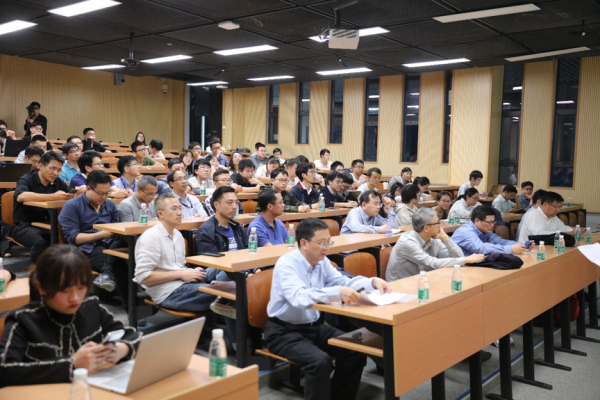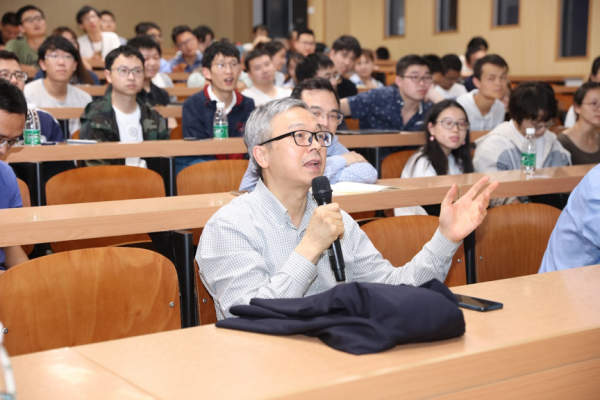Last week, Academician Gao Song from the Chinese Academy of Sciences (CAS) and President of South China University of Technology (SCUT) came to Southern University of Science and Technology (SUSTech). He was invited to give the 223rd lecture in the SUSTech Lecture Series, talking about “Organometallic Single-Ion Magnets.”
President Gao Song is a CAS academician, a member of the World Academy of Sciences (TWAS), a member of the Royal Society of Chemistry and the vice chairman of the Ninth National Committee of the China Association for Science and Technology. He is also an advisory editor of Acc. Chem. Res., Chem. Sci. and CCS Chem. President Gao Song is the editor-in-chief of Inorg. Chem. Front. and vice editor of Nat. Sci. Rev. He is a former executive vice president of Peking University (PKU). He is mainly engaged in coordination chemistry and molecular magnetic research.

President Gao Song and his research group have been studying the relationship of the interaction of magnetic ions, magnetic relaxation, magnetic ordering, molecular structures, crystal structures and single-ion anisotropy in molecular solids. He has made important contributions in the development of new molecular nano-magnets and ferroelectric molecular magnets.
President Gao Song started the lecture by showing an interesting physical phenomenon that liquid oxygen can be attracted to the magnets under a strong magnetic field, giving an indication of paramagnetic oxygen molecules. Studies of the molecular magnets can date back to the early 1990s when the first single-molecule magnet was observed, and has become one of the hottest research topics since then. He pointed out that molecular magnetic materials have significant potential applications in high-density information storage, quantum computing and molecular spin devices.
President Gao Song went through the history of molecular magnets. The early research is mostly focused on the transition metal clusters, but recently rare earth ions have received much more attention. His research group has expanded the research field of organometallic single-ion magnets, exploring a series of rare earth mononuclear sandwich structures for organometallic molecules. More and more single-ion magnets have been discovered as a result of this broader range of research which was discussed in detail during the lecture. President Gao Song also introduced the progress of compounds by chemical modification in the application of quantum computing, emphasizing the importance of interdisciplinary research.

As part of the subsequent Q&A session, there were many questions for President Gao Song from the attending teachers and students.
Proofread ByXia Yingying
Photo ByCao Ruozhen